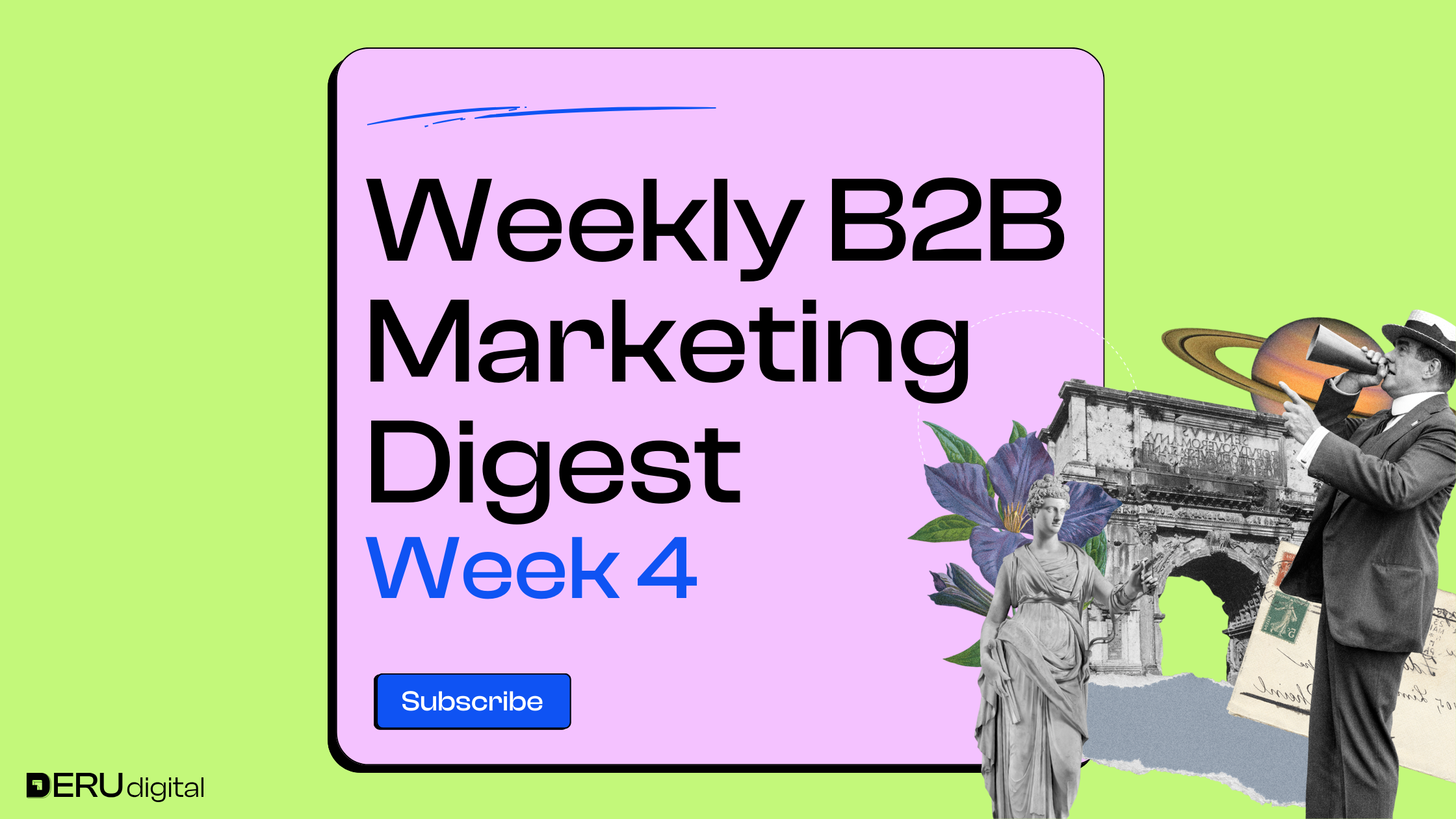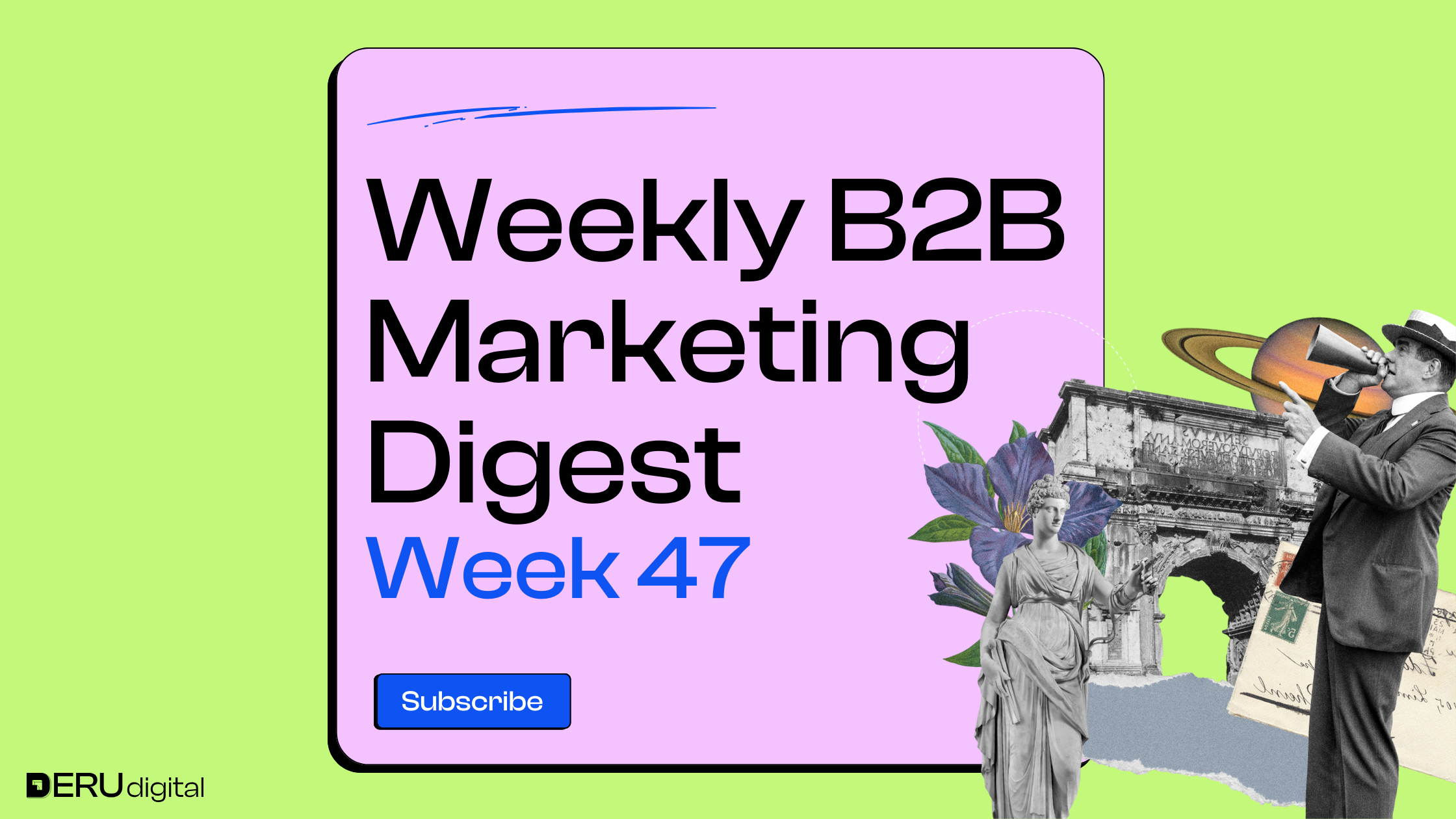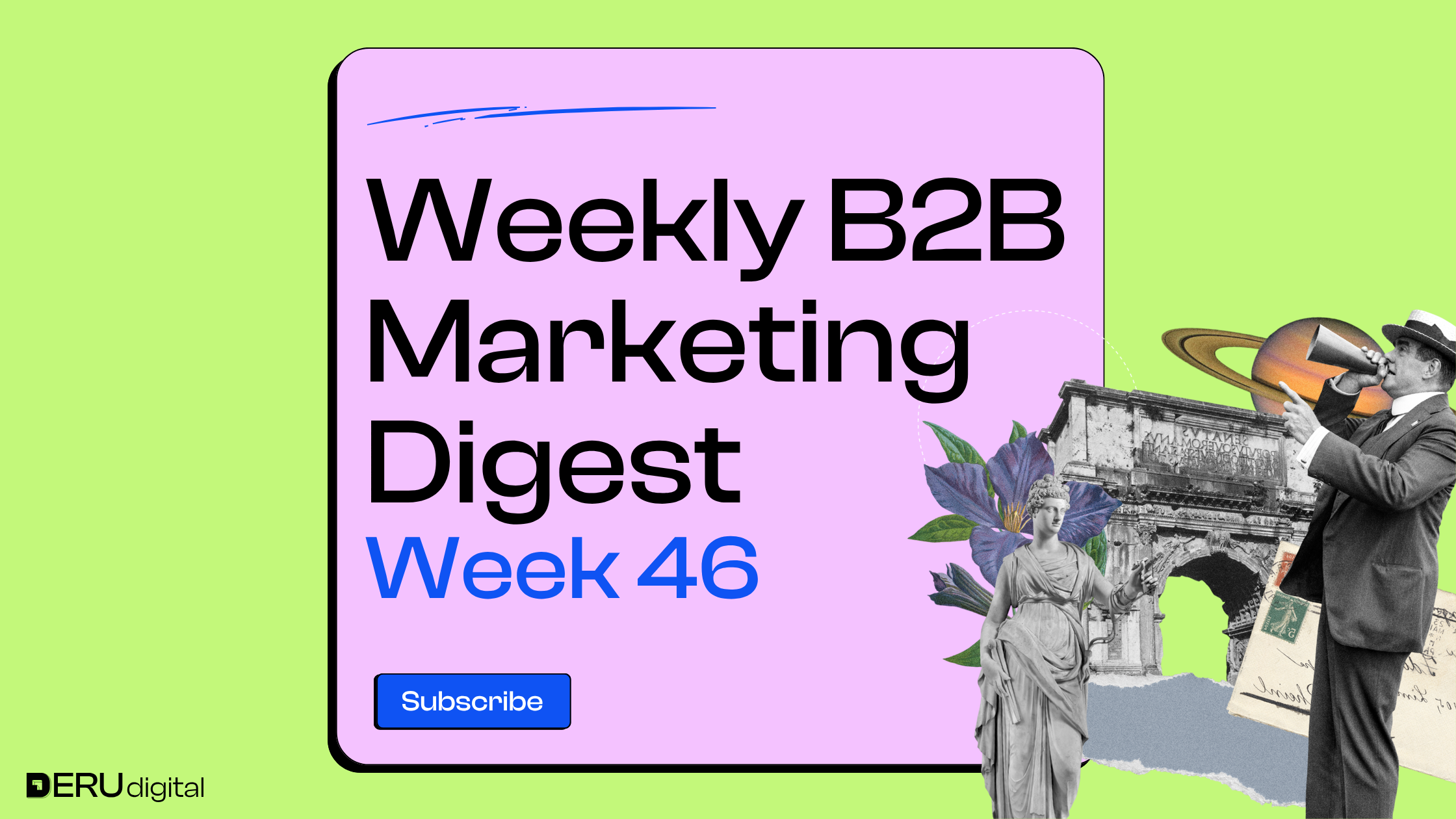INSIGHTS FROM EXPERTS ON LINKEDIN
Kirill Vdov explains why clickbait copy doesn’t work in today’s ad environment. Competing with organic posts, ads should focus on addressing pain points and benefits in detail, rather than relying on vague, overused hooks. Long-form copy often performs better, but short, punchy messaging can work if it directly resonates with audience needs.
Robert Kaminski 🎯 emphasizes the difference between demand creation and demand capture messaging. For demand creation, highlight audience problems and use cases to build awareness; for demand capture, showcase your product’s unique features and benefits. Tailoring your message to the audience’s level of awareness is key to effective marketing.

Garrett Mehrguth shares why his team replaced quarterly planning with biannual cycles, reclaiming three months for execution. Halves allow for deeper strategy, clearer commitments, and less time wasted on redundant planning. He urges companies to prioritize serving customers over conforming to traditional planning cadences.
Marta Olszewska organizes her customer interviews into five strategic clusters – customer basics, life before and after using the product, buying process, objections, and a bonus cluster for golden quotes. This system simplifies analysis, makes insights easy to retrieve, and supports targeted interviews on specific topics like pain points or results.
Adam Schoenfeld highlights the “ICP Translation Gap,” where companies define their Ideal Customer Profiles but fail to operationalize them for sales and marketing. He emphasizes turning high-level definitions into actionable strategies like account targeting, territory carving, and ad targeting. To bridge this gap, he recommends defining, translating, testing, and continuously improving your ICP model.
Gaetano Nino DiNardi explains that predicting keyword rankings is impossible in today’s volatile SEO landscape. Instead, he suggests reverse engineering successful pages by analyzing their timeline, updates, and backlinks. This approach demonstrates the long-term investment required to rank and helps set realistic expectations for stakeholders.
Pedro Porto Alegre discusses new research challenging the “maximizing reach” approach from How Brands Grow, showing that channel effectiveness depends on the category. For example, TV’s influence varies drastically between industries like auto and personal care. By viewing media as a portfolio with varying risks and objectives, marketers can optimize campaigns for greater business impact.

John Bonini reflects on declining organic search traffic as AI tools increasingly provide faster, direct answers. He argues that traditional “how-to” content won’t reverse this trend and instead recommends focusing on “how you” content – unique perspectives, data, and experiences. Product and service pages, which focus on users, remain resilient amid these changes.

Stefan Smulders offers a mega-giveaway of LinkedIn playbooks his team created after helping over 10,000 agencies scale. These playbooks cover strategies like a 100-day publishing plan, prospecting guides, and LinkedIn growth hacks. Highlighting real results – like agencies landing $50K contracts and 10x-ing response rates – Stefan positions these resources as a practical toolkit for scaling with LinkedIn.

Aldo Wink examines HubSpot’s sharp drop in organic search traffic, framing it as a wake-up call for B2B marketers. He critiques agencies stuck in outdated tactics like gated content and SEO over-reliance, urging a shift toward long-term brand building, embracing dark social channels, and adapting to changing buyer behaviors. Aldo challenges marketers to reinvent their approach and keep pace with industry evolution.
WHAT'S NEW IN THE INDUSTRY
TikTok is back online in the U.S. after a brief shutdown caused by a federal ban, though it remains absent from app stores. The app credited Donald Trump for enabling its return while legal and political battles about its future continue. Advertisers are advised to maintain their current strategies as uncertainties around the platform persist.
Google’s new “Source” column in Performance Max search terms insights helps advertisers understand why specific ads are triggered. By explaining the reasoning behind ad targeting, this update allows for better campaign optimization and alignment with goals. Advertisers can access the feature through the Insights tab, offering transparency for smarter budgeting and targeting.

Google is reportedly testing a new feature called “Search Max,” combining search term matching with text and URL optimization. Spotted in select accounts, it signals a potential shift toward AI-driven, automated ad performance strategies. Advertisers are encouraged to watch for updates, as the feature could reshape search campaign approaches.


A new “Used since” column in Google Ads shows when creative assets were first implemented, offering valuable historical insights. This feature helps marketers manage accounts more efficiently by understanding asset performance timelines and planning updates. It’s a welcome tool for agencies handling multiple accounts or auditing inherited setups.

Meta has started testing ads on Threads, providing advertisers with access to the platform’s 300 million monthly active users. Businesses can extend existing Meta ad campaigns to Threads with minimal effort, as ads will appear in users’ home feeds during the initial test phase. Meta plans to expand the program gradually, with a focus on user feedback and brand safety controls.

Google Ads now marks search terms with fewer than 50 unique searches in 90 days as “private” in Performance Max campaigns. This update offers limited insights into low-volume queries, helping advertisers better understand long-tail traffic while aligning with Google’s privacy-focused strategy. However, the lack of granular data may pose challenges for niche market advertisers relying on detailed search term analysis.

Google Ads is phasing out Maximum CPV bidding in Video View campaigns, replacing it with Target CPV for better budget control. Advertisers can now mix ad formats like Shorts, in-stream, and in-feed, potentially achieving 40% more views for the same budget. This update signals a shift toward more flexible and efficient video advertising, with Google encouraging early adoption of the new strategy.

Google’s Performance Max campaigns now include enhanced search reporting, asset group insights, and expanded controls like negative keywords and demographic targeting. Advertisers gain improved visibility into ad performance and traffic sources, addressing common requests for transparency and control. These updates aim to help businesses maximize AI-driven campaigns while meeting specific goals more effectively.
Google Analytics 4 now allows users to copy custom reports across properties, simplifying configuration management and ensuring consistency. This feature reduces repetitive setup tasks, although it excludes default reports, unsampled data, and same-property copying. The update helps analysts focus on actionable insights while streamlining multi-property management.

That’s the scoop for this week! If you found this valuable and any useful insights caught your eye, feel free to share them with your network.



